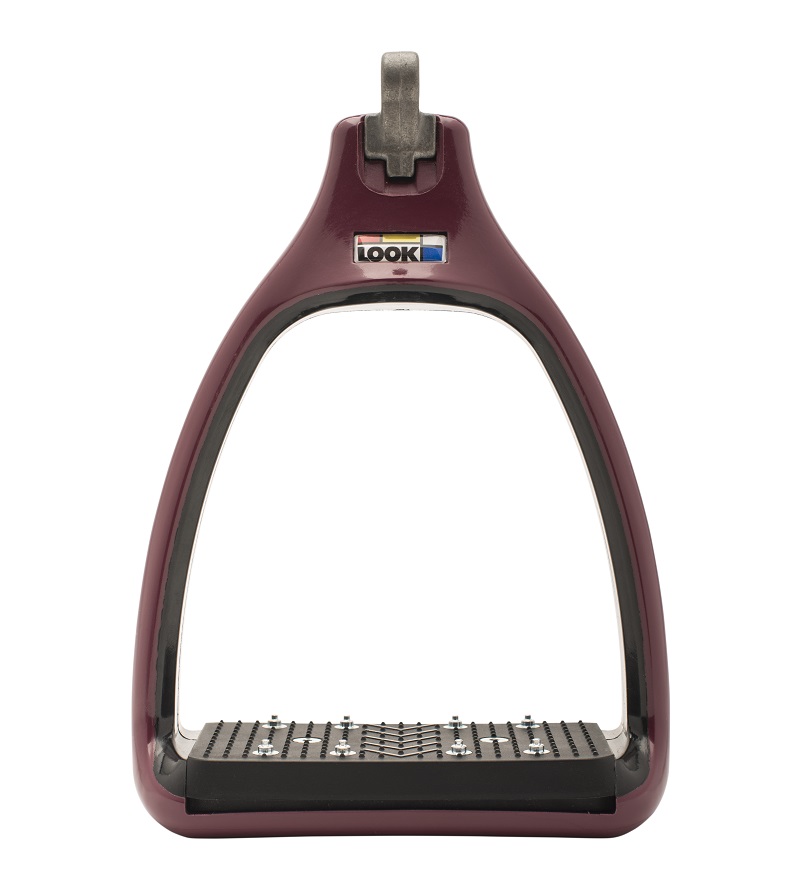A rider’s proper functioning and posture depends in part on the quality of his equipment. Of course, the choice of saddle is important, but the choice of stirrups should also be taken into consideration since they are designed to support and stabilize the rider. They have a decisive role in the technical progress of the rider, both by the comfort they can provide and by the safety they can ensure.
But which stirrups to choose? Heavy stirrups? Light? With a wide floor? Narrow? Flat? Sloping? With grips? Smooth? With identical branches? Asymmetrical? With a straight eye? Offset? Offset and articulated? With a safety device? Safety all right, but with an opening leg system or with an automatic eye release system? As many questions as different solutions proposed to meet the expectations of the rider! But what exactly do we expect from a stirrup? What are the qualities of the stirrup to be preferred?

The rider’s position and function
First, let’s take a moment to review the position and function of the rider. We will then be able to orient ourselves more easily on the choice of the stirrup.
Every rider is looking for a fair, comfortable, and safe riding. It is thanks to assiduous learning that the beginner will go through various stages to seek, discover and finally stabilize his balance to become an experienced rider. This precarious balance at the beginning of the practice will be done by holding on with the hands and feet (plantar reflex). The progression of the rider will allow him to leave this fetal reflex to become vertical and to gain balance around his center of gravity (slightly in front of the navel) whether he wears long or short shoes. The reference of this vertical axis will be the stirrup leather. The difference in length of the stirrup leather will depend on the discipline practiced: long in dressage, intermediate in endurance, riding and short in jumping or cross-country. The rider will always work around this vertical axis. Sitting, the thigh will approach the vertical. In balance, the lower joints (ankles, knees, hips) will play a spring system around this axis. The positioning of the foot, by a position adapted to the discipline, is therefore of significant importance in the stability and efficiency of the rider.
The heel must be below the level of the toes to allow the angle of the ankle to open or close, i.e., to maintain its spring system. The knee is open to play its shock absorbing role and to allow the descent of the leg. Therefore, the foot must keep all its freedom of functioning. For this, the rider must have the feet parallel or approaching parallel.
The characteristics of an adapted stirrup: comfort, safety, balance
All these explanations already give us an idea of the qualities sought in a stirrup. The oriented eye, which positions the stirrup perpendicular to the horse, facilitates the positioning of the foot by avoiding ankle torsion and keeps the stirrup flat. This allows for more grip and easier rehiring in case of loss. Obviously, in this case, the stirrup does not need to be heavy to fall properly. The grip is also due to the grips. These are used to prevent slipping but must not, in any case, for safety reasons, freeze the foot (beware of trapped feet!). For comfort, the wide floor seems essential. The inclination of the floor is specific to each rider: it depends on the support which is more or less important according to the activity practiced. Indeed, the force in the stirrup when landing an obstacle or a counterbalance will be different from that exerted when leaning in a balanced position for example. Therefore, a cushion under the floor is interesting. This cushioning must be able to respond to all the rider’s stances to maintain the flexibility of the ankle while keeping the foot in line. Let’s always think about our observable vertical stirrup or slightly beyond the vertical and avoid the leg that goes forward, blocks the knee, and makes the rider heavy on the horse’s back! Finally, to address an important subject: safety. Why do without it when it can be optimized with stirrups? There is no need to hesitate on this criterion!
Finally, when you want performance, you don’t neglect anything. As the saying goes: “The devil is in the detail”. Take the time to choose your stirrups for your comfort and safety!


